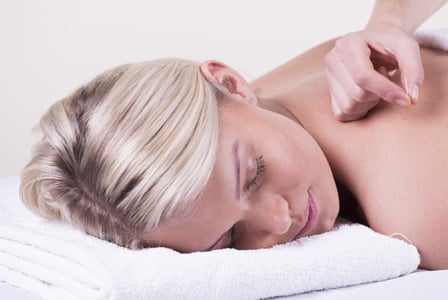
How much do you know about acupuncture? Test your knowledge about this ancient healing modality!
How much do you know about acupuncture? This key component of traditional Chinese medicine involves inserting long, thin needles into the skin. And although—to the unaccustomed—acupuncture can seem a little nerve-wracking, there’s nothing to be squeamish about!
Recently, all of us at the alive office had the chance to try it out! Our Editorial Advisory Board member Melissa Carr and her Active Life Mobile Acupuncture team came in to give alive staff personalized acupuncture treatments. By all accounts, it was an amazing experience.
Here are five things you might not know about acupuncture.
1. No, it doesn’t hurt!
As Melissa Carr and her team explained, many people feel a sense of heaviness or relaxation during treatment, but not pain. The needles are actually extremely thin, and surprisingly flexible and soft.
2. It takes into account your whole self
Don’t be surprised if your acupuncturist asks about your lifestyle and diet, feels your pulse, or asks to look at your tongue. Acupuncture takes the whole being into account, rather than just zeroing in on the symptoms.
3. The body of research is growing…
Acupuncture has been around for thousands of years, but scientific research is only now beginning to confirm its many benefits. So far, acupuncture is thought to help control pain, side effects of chemotherapy such as nausea and vomiting, headaches, menstrual pain, and fibromyalgia, as well as boosting one’s immune system.
4. We’re not 100% sure of how it works
Even though acupuncture has been shown to be effective in many cases, no one really knows how it works. According to the theory behind traditional Chinese medicine, acupuncture works by balancing energy flow within the body. This energy is thought to flow through pathways called meridians. However, many Western researchers believe that acupuncture works by stimulating muscles, nerves, and tissues; increasing blood flow to the area; and boosting our body’s activity of natural painkillers.
5. The needles don’t necessarily go where the pain is
As Carr explained, there are more than 350 “acupoints” in the body, so if you have abdominal pain, for instance, the needles may not have to be inserted into the abdomen. This is helpful for group acupuncture sessions (such as the alive one!) or if the patient is not comfortable revealing a certain part of their body to the practitioner.
Before you get started…
If it’s your first time trying out acupuncture, make sure you choose a certified, knowledgeable practitioner who exercises good hygiene—including using new needles each time that are discarded after use. If you’re pregnant or have a specific medical condition, it’s best to get the green light from your primary health care practitioner first.
Have you ever tried acupuncture? Let us know!



